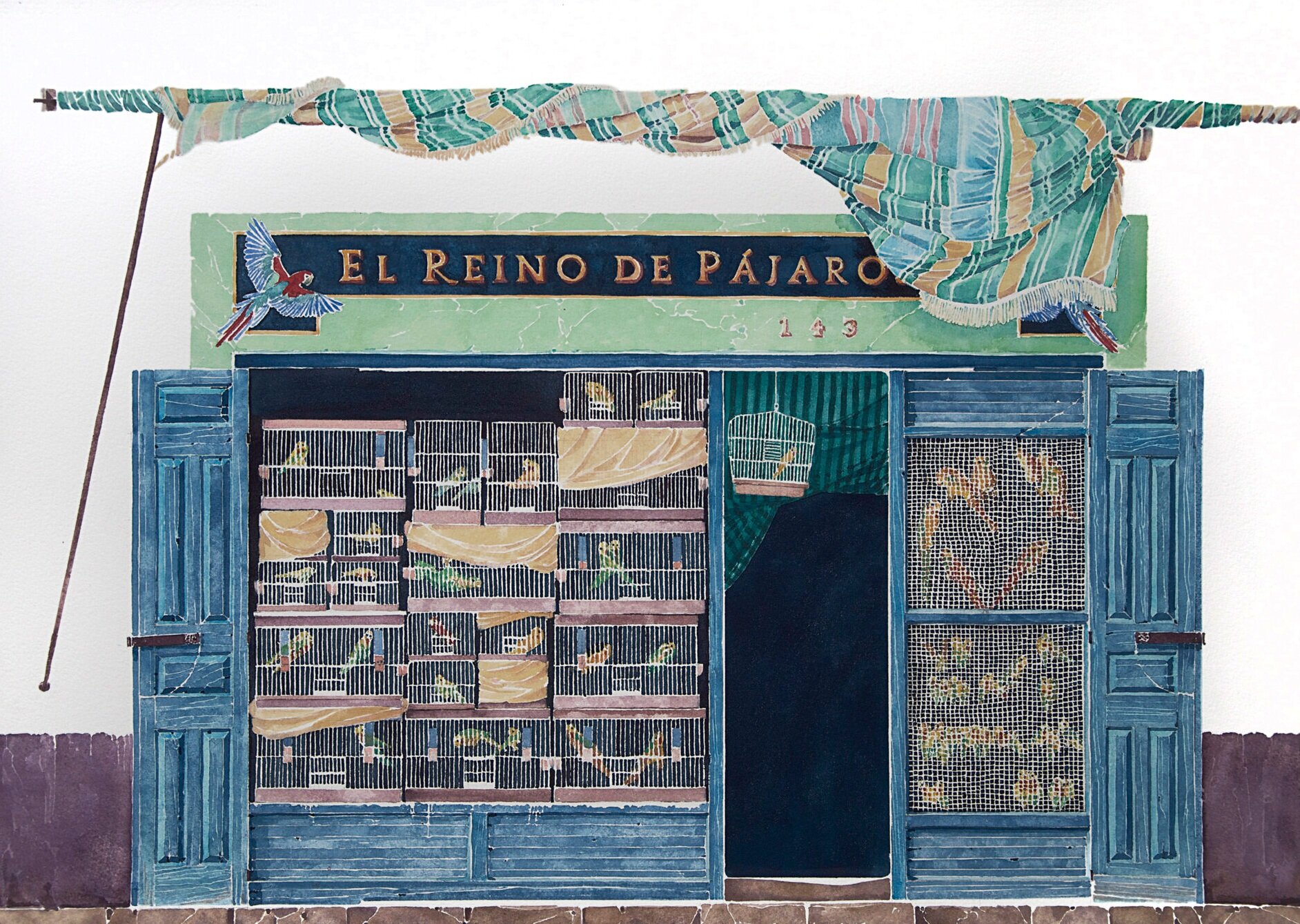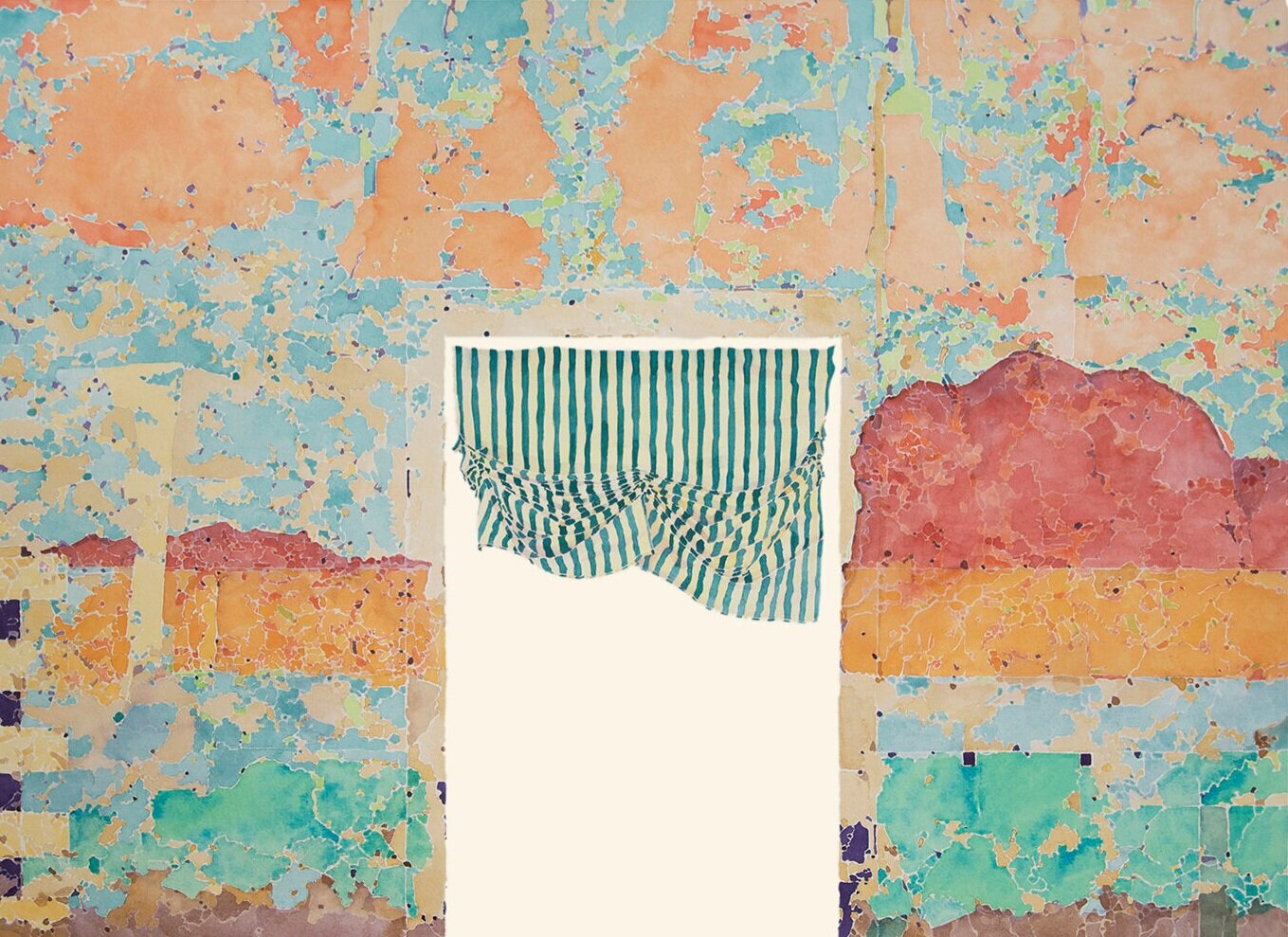Architectural Watercolors
My annual extended journeys to Europe began in 1978 with the purpose of augmenting my knowledge of architectural history that during my university training had consisted exclusively of the study of modernist antecedents.
At first I settled in Northern Europe where I produced detailed, on-site watercolors from French Romanesque and Gothic cathedrals. But my upbringing in rural Indiana made me more comfortable working among country villagers and their simple, rustic homes rather than studying the better known, more studied architectural monuments. And so, I shifted my interest to the simpler architecture found in the villages of farmers and fishermen living in the lands bordering the Mediterranean Sea. My painting and photographic style and subject were fixed by the early 1980s, combining my deep interest in vernacular architecture with my passion for color.
During my early travels in Europe I developed a personal dry-brush watercolor technique that allowed me to paint continuously without waiting for washes to dry. I first prepared a very accurate, detailed pencil drawing on heavy watercolor paper. I then filled in each separate area defined by the pencil lines, over-painting from light to dark and blotting for texture while keeping the washes separated by the unpainted pencil lines. I determined what was unnecessary or distracting and left these areas unpainted. Then I would finish the painting by erasing the pencil lines and washing over larger areas if needed.
When in my California studio, I depended upon photographs taken on my travels to produce large-scale paintings. As my technique developed, my highly detailed studio watercolors required more and more time to complete, often a month or more each. By the early 1990’s, I found myself exhausted by the time I needed to produce enough work for my annual one-man shows. Combined with the increasing demand for photographic exhibitions, I pulled away from painting and concentrated most of my energies on photography and the anthropological study of the history of vernacular architecture and color. But I continue to return to painting regularly, its sympathetic vision and unexpected results pushing my photography in new directions as one media informs and drives the other.
Adobe Wall, Oaxaca, Mexico 2014, 22x30
The Kingdom of Birds, Santa Biatriz, Lima, Peru 2012, 22x30
Arch and Canary, Gallipoli, Italy 2012, 22x30
Layered Color, San Cristóbal Totonicapán, Guatemala 2012, 22x30
Shoemaker's Wall, Jodhpur, Rajasthan, India 2012, 22x30
The Old Cloister, Huancavelica, Peru 2016, 22x30
Terminus, Pisticci, Italy 2016, 22x30
Layered Colors, Piura, Peru 2014, 22x30
Carved Door with Curtain, Jauja, Huancayo, Peru 2012, 22x30
Green Blinds, Braga, Portugal 1991 22x30
Wall with Frescoes, Treviso, Italy 1986 (four panel set), 100x30
Palaces, Grand Canal, Venice, Italy 1983, 22x30
Birdcages, Verona, Italy 1982, 22x30
Palace Windows, Venice, Italy 1981, 22x30















